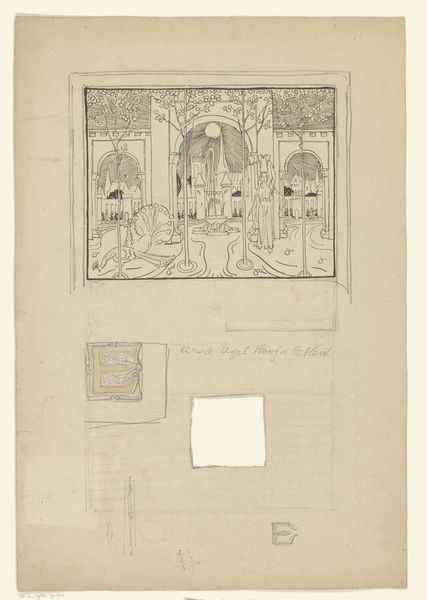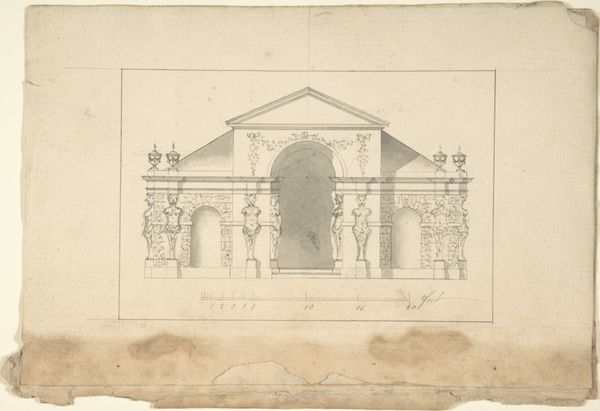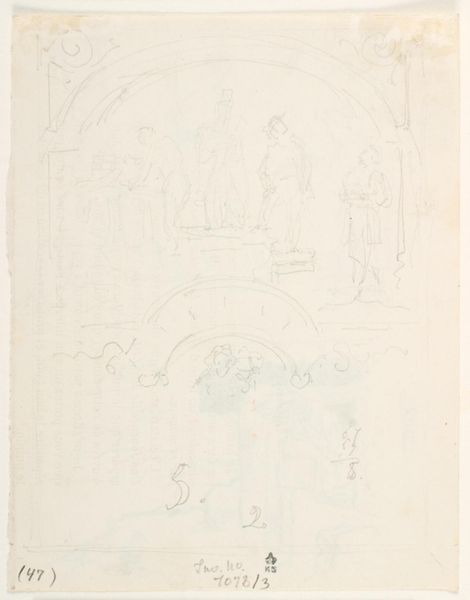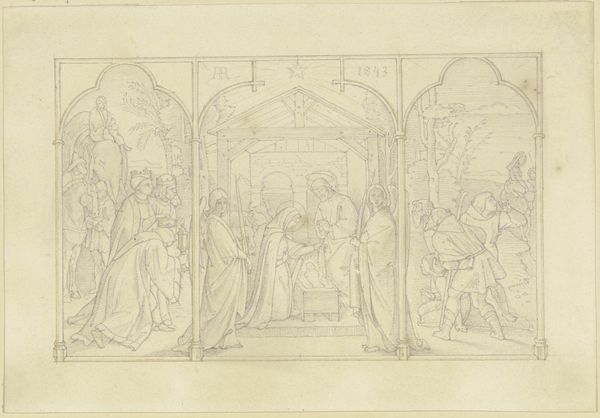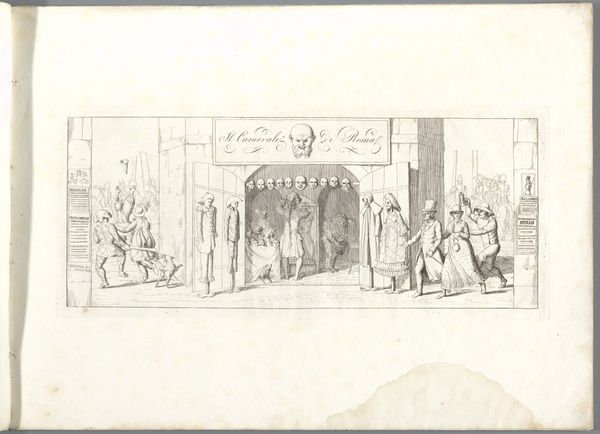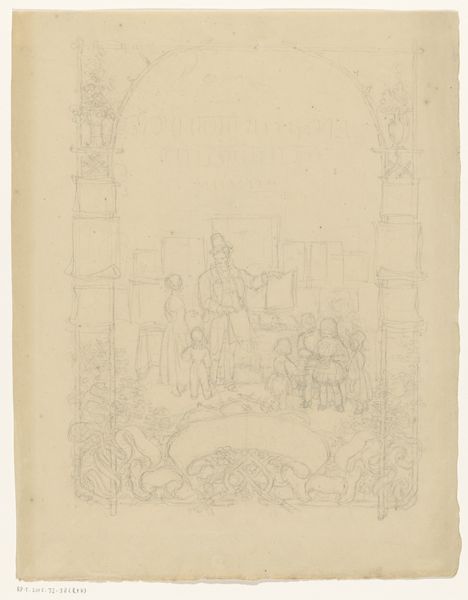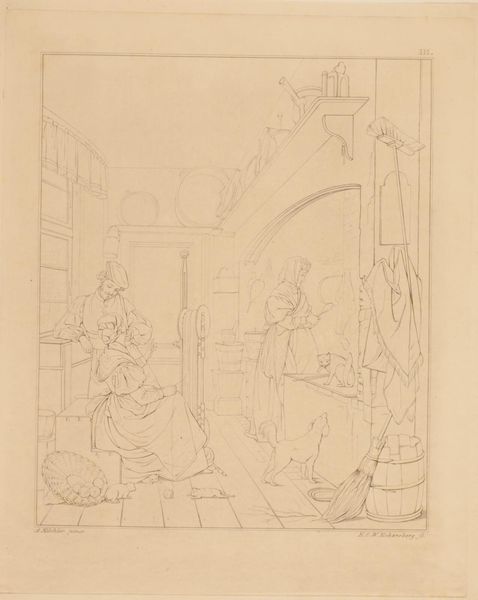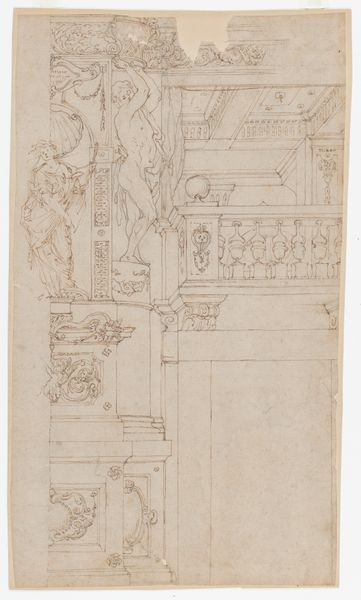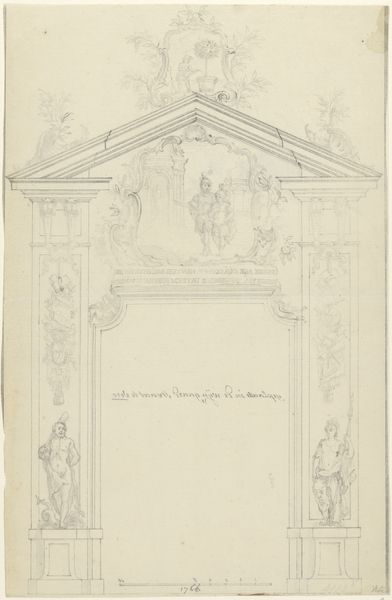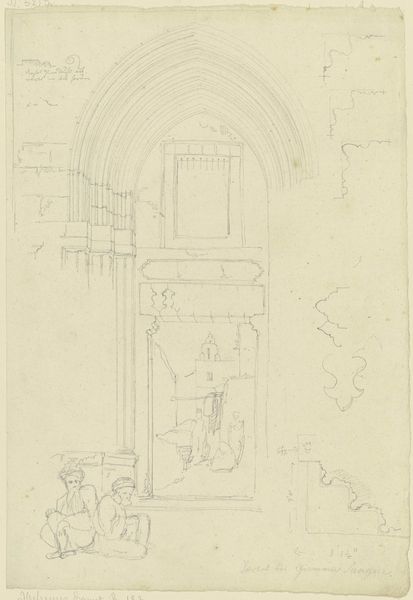
drawing, ink, pen
#
portrait
#
drawing
#
ink drawing
#
pen sketch
#
caricature
#
ink
#
pen
#
history-painting
Dimensions: height 202 mm, width 292 mm
Copyright: Rijks Museum: Open Domain
Curator: Here we have a drawing by Johan Michaël Schmidt Crans, titled "Studie voor spotprent op Bismarck en de paus, 1878," a study for a satirical print of Bismarck and the Pope from 1878. It's rendered in ink and pen, creating a fairly stark composition. Editor: My immediate impression is that of political chessboard with figures of power sitting stiffly on either side of it; it is like the set design for an absurdist history play. Curator: Precisely! It emerged from the period known as the Kulturkampf in Germany, Bismarck's struggle against the influence of the Catholic Church. Seeing the chessboard gives an insightful overview of this battle between secular and religious power. Who controls the narrative, controls the state. Editor: The draughtsmanship here is fascinating, but in such a state. You see all the preliminary lines of where he’s constructing. The tools would likely have been fairly basic, but the material context - cheap paper, quickly applied ink – lends a great sense of urgency to the piece. Like a sketch towards a polemical broadside intended for fast distribution. Curator: Absolutely. This reflects the tensions of the Kulturkampf, the swift responses and counter-responses between the state and the Church, really bringing us into the period. I am really captivated by this battle over personhood—each side fighting to prove that they better deserve access to autonomy for each person in their “jurisdiction." The role of the body politic here is particularly interesting to consider given contemporary movements for personal bodily autonomy. Editor: And the act of disseminating an image like this... Cheap, reproduced images gave this perspective on political issues directly to consumers without any intermediaries. A pretty potent political tool. It really democratized discourse at the time, changing power dynamics for artists, too. Curator: Yes, the way Schmidt Crans mobilized and disseminated his image allows everyday people to be involved in contemporary events that directly affected their lives and the livelihoods of people around them. His use of caricature can certainly be understood as a reflection of the shifting cultural landscape of the period. Editor: This study’s utilitarian nature means that its making processes aren’t hidden or obscured, and that really challenges notions around high art. And looking at the chess board – I can’t tell you what the ‘correct’ next move would be. But this offers us some clues about possible motivations for conflict and progress toward different goals. Curator: Absolutely, seeing those motivations come to life helps one truly contemplate and come closer to resolving certain personal dilemmas that impact our roles as social agents and citizens in society. Editor: Indeed. This drawing provides some intriguing starting points for an ongoing analysis.
Comments
No comments
Be the first to comment and join the conversation on the ultimate creative platform.
